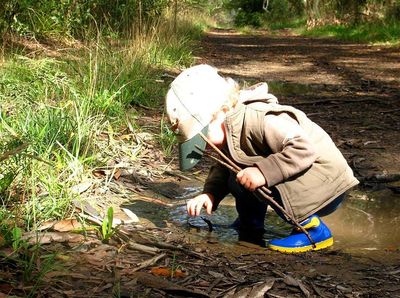How to Get Kids off Their Phones and into Nature
In his 2005 book Last Child in the Woods, author Richard Louv described what he termed as ‘nature deficit disorder’. While never intended as a medical diagnosis (it’s not recognised in any medical journal), Louv was simply attempting to explain that there were negative affects related to restricting your child’s access to nature. Keeping your kid cooped up and staring at screens can cause behavioural problems, he argued, and was partly to blame for the rise in attention disorders and depression in US children.
While much of Louv’s work has been shouted down as questionable at best by the medical fraternity, there are a variety of very real benefits related to getting amongst nature. Physical activity in nature has been proven to be important to a person’s wellbeing, and simply being in the wild can seriously reduce sadness and negative emotions. But more than the health benefits, getting into nature with your family is fun.
Louv is back with a new book, Vitamin N, which is packed with 500 tips and tricks that focus on getting your kids into nature. Here are our top slices of wisdom:
Nature is Everywhere: Embrace It
‘I’d love to get my kids into nature’, many of you may be saying, ‘but I live in a city’. Never fear; to a child, the nature in your backyard can be just as exciting as the nature in a forest.
Make a ‘world watching window’ in your home, stocked with plant, animal and insect identification books, that’ll get your children excited when they see a bird fly into your yard, or a bug climb up your window. Make time to lay in your backyard with your children and go cloud-spotting, identifying the different types of arrangements. Watch and learn about the changes of seasons in your yard or on your street.
Make Playtime a Communal Effort
Louv argues that the reduction in self-directed free play over the last few decades has resulted in a child of 7 today having the same practicality and independence of a child of 5 in 1940. And while Australia has statistically never been safer, that fact is a hard one to swallow when you watch the nightly news.
So instead of pushing your child out the front door, team up with your neighbours to keep an eye on your neighbourhood’s children at a respectable distance. Create boundaries that they can work within, but don’t make your presence felt unless you really need to. This will allow your children to blaze their own path, and develop a love of nature entirely independently.
Don’t Let Mother Nature Win
There can be a serious temptation to not wander outside unless the weather is perfect. In more inclement areas, this can result in a whole heap of weather-related inactivity. But who says you can’t have fun on a wet, hot or windy day?
If your area is prone to snow, get a piece of black paper and catch some snowflakes (they won’t melt) and study them with a magnifying glass. Go hailstone collecting, and try to find the biggest one. Have leaf races in rain-filled gutters, fly a kite in the wind, or find somewhere to swim in the heat of summer, rather than wasting it sitting under an air-conditioning vent.
Do It for the Planet's Health
The earth is seriously feeling the effect of human activity. And while that effect may not be hugely noticeable while you’re still around, your children are going to be on this earth long after you pass, and will be dealing with far more serious consequences.
Developing a good relationship with nature and the environment at an early age can help your children be the change. You can help set this example. Go on family bike rides rather than family car trips. Walk your children to school. Get involved in events like Clean Up Australia Day. By showing your children the vital role our environment plays in not only our own health, but the health of the whole world, the future will begin to look brighter and brighter.
While nature deficit disorder may or may not exist, I can categorically say that there’s no such thing as a nature overdose. Australia is home to some of the most stunning nature on the planet. And while the beauty of our country may well be captured nicely in a YouTube clip, there’s simply no substitute to getting out and enjoying it first-hand.
DISCLAIMER* Please note, this advice is general in nature and we strongly recommend consulting the product manual and where relevant, a professional installer.







